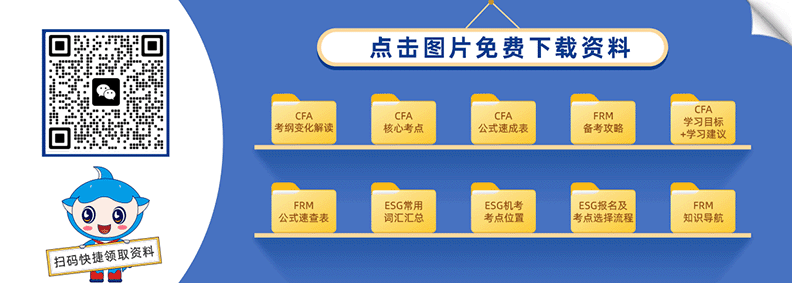你说现在问2020年12月的CFA考纲变化是不是有些早了呢?毕竟2020年的6月考试报名还没有结束呢?就开始问12月的CFA考纲变化了,小编想说的是,不要在意时间的长短,只要你想要什么时间考试是考生的自由,给自己做决定的事情一定要慎重!
6月份的CFA考试报名优惠阶段已经结束了,想要参加12月的考试小编告诉你,只有一级的考试,6月的CFA考纲变化和12月的一样,你现在想要学习12月的在CFA知识的话,你就可以参考6月份的考纲变化,针对性的开始学习。
我们就来说一下,CFA一级考纲变化,让12月参加考生的考生明白一下!
(1)伦理道德与专业准则(Ethical and Professional Standards)部分:
Reading 1. Ethics And Trust In The Investment Profession中:
新增考纲:c. describe professions and how they establish trust;
取消了对framework for ethical decision making的应用(apply)要求。
(2)数量方法(Quantitative Methods)部分:
删除整个Reading. Discounted Cash Flow Applications 免费发送CFA最新资料(点我领取)
Reading 7. Statistical Concepts and Market Returns中,19相比18年考纲取消了对夏普比率(Sharpe ratio)的计算和解释要求。
Reading 11. Hypothesis Testing中,新增考纲:k. formulate a test of the hypothesis that the population correlation coefficient equals zero and determine whether the hypothesis is rejected at a given level of significance;
原Reading 13. Technical Analysis 整体移动到组合管理(Portfolio Management)部分。
(3)公司财报分析(Financial Reporting Analysis)部分:
Reading 20. Financial Reporting Standards中:
删除4条考纲要求,分别为:
1.c. describe the status of global convergence of accounting standards and ongoing barriers to developing one universally accepted set of financial reporting standards;
2.f. compare key concepts of financial reporting standards under IFRS and US generally accepted accounting principles (US GAAP) reporting systems;
3.g. identify characteristics of a coherent financial reporting framework and the barriers to creating such a framework;
4.i. analyze company disclosures of significant accounting policies.
取消财报准则设置机构的描述、对国际证监会组织的角色描述、财报的目标描述、财报的前提准备等要求。

b. accrual accounting, specific revenue recognition applications (including accounting for long-term contracts, installment sales, barter transactions, gross and net reporting of revenue), and implications of revenue recognition principles for financial analysis;
d. describe key aspects of the converged accounting standards for revenue recognition issued by the International Accounting Standards Board and Financial Accounting Standards Board in May 2014;
Reading 26. Long-lived Assets 中,删除原考纲要求:
o. explain and evaluate how leasing rather than purchasing assets affects financial statements and ratios;
p. explain and evaluate how finance leases and operating leases affect financial statements and ratios from the perspective of both the lessor and the lessee.
Reading 30. Non-current (Long-term) Liabilities中,删除原考纲要求:
h. determine the initial recognition, initial measurement, and subsequent measurement of finance leases;
i. compare the disclosures relating to finance and operating leases;
(4)公司金融(Corporate Finance)部分:
Reading 32. Capital Budgeting,新增考纲:f contrast the NPV decision rule to the IRR decision rule and identify problems associated with the IRR rule;
(5)固定收益投资(Fixed income)部分:
Reading 44. Introduction to Fixed-Income Valuation中,新增考纲:f calculate annual yield on a bond for varying compounding periods in a year;
(6)衍生工具(Derivatives)部分:
Reading 48. Derivative Markets and Instruments中,新增考纲d determine the value at expiration and profit from a long or a short position in a call or put option;
Reading 49. Basics of Derivative Pricing and Valuation中,
新增考纲c. calculate a forward price of an asset with zero, positive, or negative net cost of carry;
删除原考纲i . explain how the value of a European option is determined at expiration;
(7)投资组合(Portfolio Management)部分整体移动到其他类投资之后:
Reading 51. Portfolio Management: An Overview中,新增考纲:b describe the steps in the portfolio management process;
Reading 52. Portfolio Risk and Return: Part I中,新增考纲:b. compare the money-weighted and time-weighted rates of return and evaluate the performance of portfolios based on these measures
Reading 54. Basics of Portfolio Planning and Construction中,新增考纲:h describe how environmental, social, and governance (ESG) considerations may be integrated into portfolio planning and construction.











